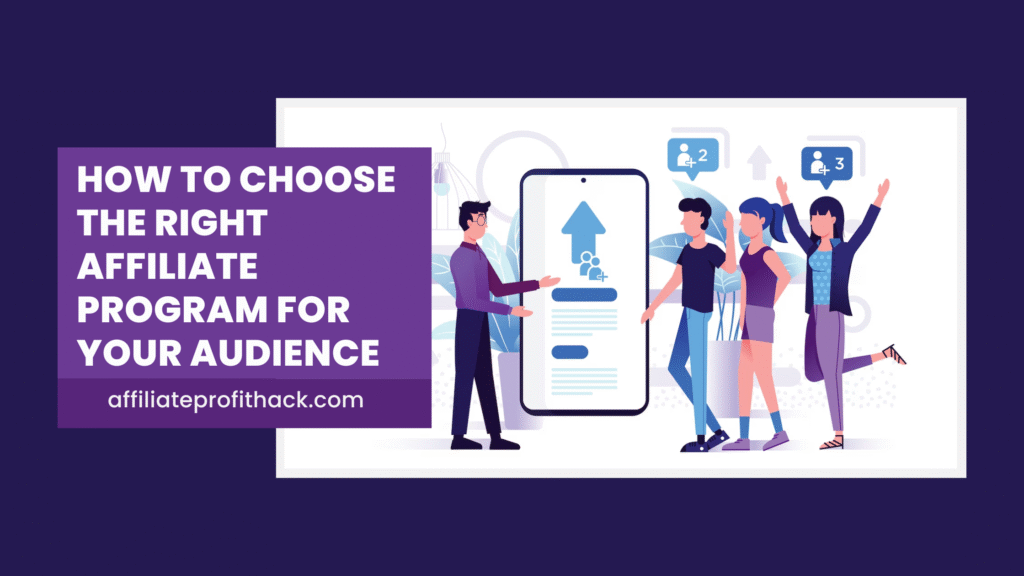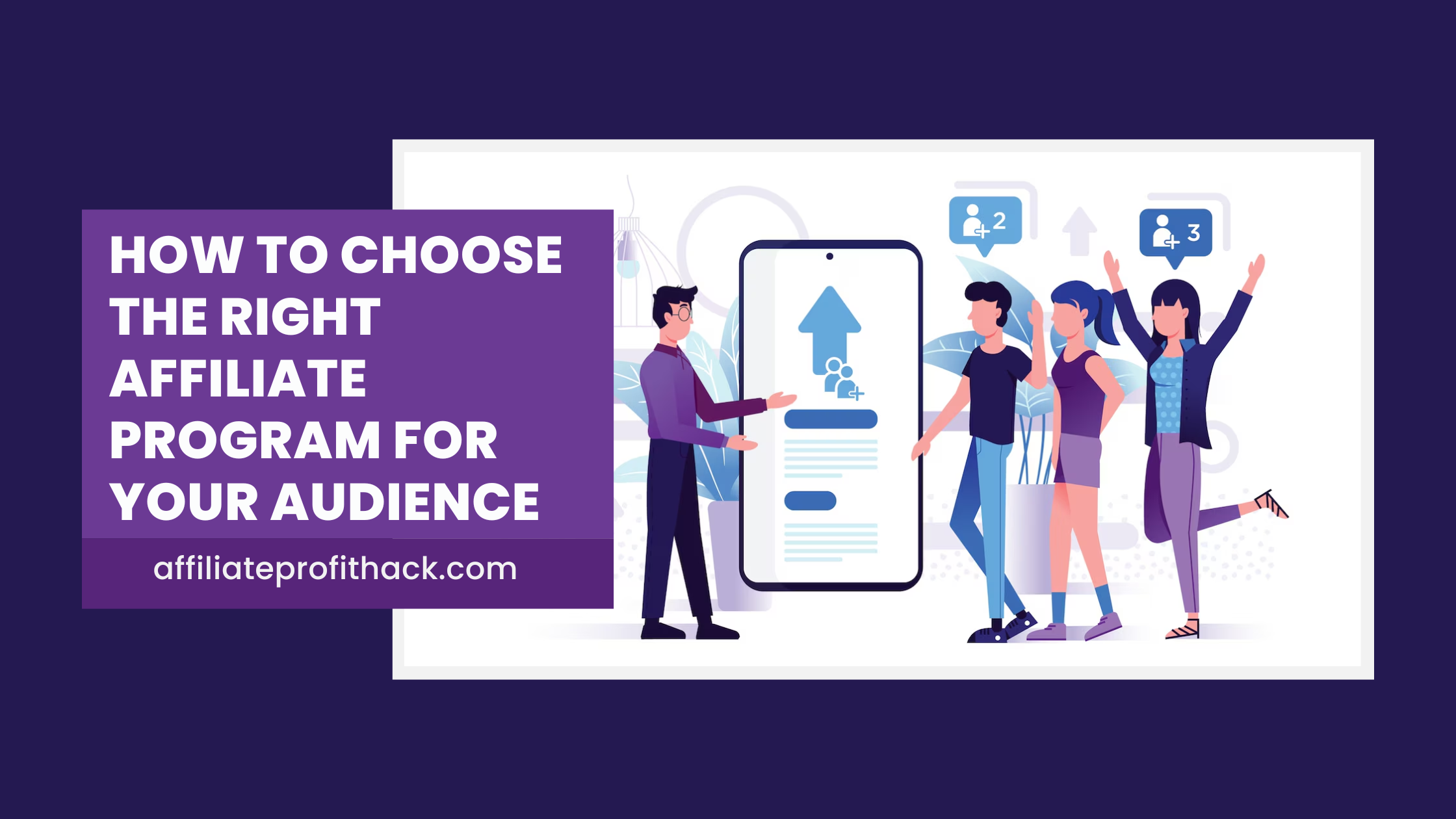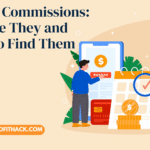Welcome to my article “How to Choose the Right Affiliate Program for Your Audience”.
Diving into affiliate marketing can feel a bit like walking into a buffet with hundreds of dishes—you know you can’t try them all, but they all look tempting. The problem? Not every dish will suit your taste buds… and not every affiliate program will suit your audience. You could promote the world’s most popular product, but if it’s about fishing gear and your audience is a bunch of city-dwelling tech lovers, you’re not going to reel in many sales.
Choosing the right affiliate program isn’t about picking the one with the biggest commission rate or the flashiest marketing materials. It’s about knowing your audience so well that you can confidently say, “Yes, they will love this… and actually buy it.” When your promotions align with your audience’s needs, your recommendations feel more like a trusted friend’s advice rather than a sales pitch—and that’s when the magic happens.
My Best Recommended & Proven Way to Make $100-$300 Daily – Watch This FREE Video to START >>>

Understand Your Audience’s Needs and Interests
Before you even think about signing up for an affiliate program, you need to know who you’re talking to. And I don’t mean in a vague, “My audience is everyone” kind of way—that’s like saying your favourite food is “edible stuff.” You need specifics.
Start by defining your audience’s demographics: age, location, profession, and lifestyle. Then dig into their psychographics—their values, challenges, goals, and buying habits. Are they budget-conscious shoppers looking for the best deals? Are they premium buyers who value quality above all else? Or are they impulse buyers who just saw a trending gadget and thought, “I need this in my life right now”?
Analytics tools, surveys, and social media polls are your best friends here. Google Analytics can tell you what topics bring people to your website. Instagram stories can give you quick insights with polls and question stickers. And if you’re really committed, you can join the same online communities your audience hangs out in to see what they’re talking about, what they’re frustrated with, and what solutions they’re actively searching for.
Once you’ve got this information, choosing affiliate products becomes much easier. You’re no longer guessing—you’re matching products directly to their interests and needs. Think of it like being a matchmaker: you’re not just setting them up with anyone; you’re finding them “the one” that ticks all the right boxes.
When you know your audience inside out, your promotions stop feeling like cold sales pitches and start sounding like valuable recommendations from someone who “gets” them. That’s when trust builds—and trust is the real currency in affiliate marketing.
Evaluate the Product or Service Quality
Let’s be honest—if you recommend something terrible, your audience will remember. And not in the “aww, such sweet memories” way. They’ll remember it like that dodgy restaurant where the food looked great in pictures but made you regret every life choice afterward.
Quality matters, not just because it impacts sales, but because it impacts trust. If you promote low-quality products, your audience will start questioning your judgment. And once trust takes a hit, it’s incredibly hard to rebuild. That’s why you should do your homework before putting your name behind any product or service.
My Best Recommended & Proven Way to Make $100-$300 Daily – Watch This FREE Video to START >>>
Ideally, you should test the product yourself. Use it, explore it, and see if it actually delivers on the promises in the sales pitch. If you can’t test it directly, dig into reviews from verified customers, check ratings on trusted platforms, and see if the brand has a history of complaints or returns.
Also, pay attention to the overall experience. Does the company provide clear product information? Is their customer service helpful and easy to reach? Are delivery times reasonable? Remember, you’re not just selling a product—you’re endorsing an entire experience.
When you genuinely believe in the quality of what you’re promoting, your recommendations will come across as authentic. That authenticity builds loyalty, and loyalty leads to long-term affiliate success. On the other hand, if you compromise on quality just to make a quick sale, your audience will notice—and they won’t be shy about telling others.
Bottom line: choose products you’d proudly recommend to a close friend, not ones you’d have to awkwardly defend at a dinner party.
Compare Commission Rates and Payment Structures
It’s easy to get dazzled by a big, bold “High Commission” banner when you’re browsing affiliate programs. But here’s the catch—just because a program offers a generous payout doesn’t mean it’s the best fit for you or your audience. A high commission on a product no one buys is still… well, nothing.
Start by understanding the commission model. Some programs offer a flat rate per sale, while others give you a percentage of the total purchase value. Then there are recurring commissions, which pay you every time a customer you referred makes a repeat purchase or renews a subscription. Those can be gold if you’re promoting something people use regularly, like software or memberships.
Next, take a close look at cookie duration. This is how long after someone clicks your affiliate link you’ll still get credit for the sale. A 30-day cookie gives you a bigger window than a 24-hour one. In short, the longer the cookie, the better your chances of earning from delayed purchases.
Also, check the payment schedule. Some programs pay monthly, others quarterly, and a few wait until you hit a certain threshold before sending you anything. Make sure the timing and method suit your cash flow needs.
Most importantly, weigh the commission rate against the product’s price, audience demand, and conversion rate. A smaller commission on a high-demand, easy-to-sell product can often outperform a high commission on something that’s difficult to convince people to buy.
In short, don’t let flashy percentages distract you from the bigger picture. The right payment structure is one that rewards you fairly for your efforts while keeping your audience happy and engaged.
Research the Brand’s Reputation and Support
Think of affiliate marketing as a partnership—you’re not just promoting a product, you’re tying your credibility to the company behind it. If they have a bad reputation, slow delivery, or non-existent customer service, guess who your audience will blame first? Hint: it’s not the brand’s CEO.
Start with a quick brand background check. Search for reviews on sites like Trustpilot, Google Reviews, or industry-specific forums. Look for patterns—one or two bad reviews happen to everyone, but a steady stream of complaints about quality or service is a red flag. You can also check the company’s social media to see how they interact with customers. Are they helpful and responsive, or do they vanish faster than a free snack at a meeting?
My Best Recommended & Proven Way to Make $100-$300 Daily – Watch This FREE Video to START >>>
Another important factor is affiliate support. A good program should offer clear onboarding materials, promotional resources, and a dedicated affiliate manager or support team. This makes your life much easier when you have questions about tracking links, commission payouts, or marketing guidelines. If a program leaves you digging through outdated PDFs to figure things out, it might not be worth the hassle.
Reputation isn’t just about avoiding bad companies—it’s also about aligning with brands that enhance your own image. When you partner with a trusted, well-reviewed company, your recommendations carry more weight. Your audience is far more likely to click, buy, and come back for more when they feel confident in both you and the brand.
Bottom line: if you wouldn’t proudly stand next to the brand’s booth at a public event and say, “Yes, I work with them,” it’s probably not the right affiliate partner for you.
Analyse Long-Term Earning Potential
Some affiliate products are like seasonal fashion trends—they look exciting for a moment, but vanish before you’ve even cashed your first commission. Others are the reliable classics that keep paying you month after month. The trick is learning how to tell the difference before you sign up.
Start by asking yourself whether the product is evergreen or trend-based. Evergreen products solve problems or fulfil needs that never really go away—think fitness programs, productivity tools, or home essentials. Trend-based products (like a viral gadget or a limited-edition item) can earn you quick wins, but once the hype dies, so do your commissions. A good affiliate strategy usually mixes both, but leans toward products with staying power.
Look at the lifetime customer value. Some products open the door to upsells, cross-sells, or subscription renewals—meaning you earn repeatedly from the same customer. For example, software memberships, educational courses, or consumable products can provide a steady income stream without you having to constantly find new buyers.
It’s also worth checking whether the brand is growing or stagnating. A company that keeps improving its product, expanding its market, and investing in marketing will naturally create more opportunities for you to earn. On the flip side, a brand that hasn’t updated its offer in years might slowly fade into irrelevance—taking your earnings with it.
Finally, think about scalability. If your audience grows, can your affiliate income grow with it? The best programs are the ones that can reward you more as your reach expands, without you needing to reinvent your strategy every few months.
In short, focus on affiliate programs that can become long-term partners, not just short-lived flings. Your future self will thank you.
Conclusion
Choosing the right affiliate program isn’t just about picking something that pays well—it’s about finding the perfect balance between what your audience needs and what you can confidently recommend. When your promotions align with their interests, your credibility grows, and so does the likelihood that they’ll take action on your recommendations.
We’ve covered the essentials: knowing your audience inside out, making sure the product or service is actually worth buying, understanding commission structures beyond just the flashy percentages, checking if the brand behind the product is one you’d proudly associate with, and thinking about long-term earning potential rather than chasing short-lived hype. Each of these steps works together to protect your reputation while maximising your results.
The truth is, affiliate marketing works best when it doesn’t feel like marketing at all—when your audience sees you as a trusted guide rather than just another salesperson. That trust is built over time, through consistent, relevant, and high-quality recommendations.
My Best Recommended & Proven Way to Make $100-$300 Daily – Watch This FREE Video to START >>>
So before you sign up for the next “too good to be true” affiliate program, pause and run it through this checklist. If it ticks all the boxes, you’re not just adding another link to your site—you’re building a partnership that could benefit you and your audience for years to come.
Thank you for reading my article “How to Choose the Right Affiliate Program for Your Audience” till the end. Hope it helped you. See you with another article.










